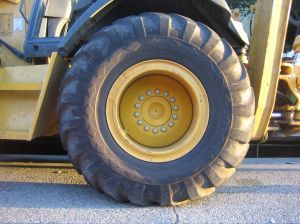Worker Dies in Texas Tank Accident
Recently, My San Antonio.com published a tragic story about the death of a 38-year-old worker of an oilfield services company. The worker was working at Abilene Pipe in West Texas at the time of the fatal accident, which occurred as he was helping to load tanks onto a trailer.
Our San Antonio injury attorneys know that oilfields are dangerous places where any number of workplace hazards exist. We are saddened that the accident at Abilene Pipe resulted in the loss of a life and we urge employees and oil service companies to try to take steps to reduce the accident risks.
The Tank Accident
According to My San Antonio.com, the 38-year-old worker who was killed was assisting in the process of loading tanks onto a trailer. This is a routine part of the job as the tanks must be loaded for transport.
Unfortunately, a tank being loaded onto the trailer began to roll and it struck the worker. When the tank struck, it caused a serious head injury, which ultimately proved fatal. The young worker was pronounced dead at the accident scene.
Avoiding Tank Accidents and Staying Safe
It is not clear what caused the tanker to roll in this unfortunate incident. However, while the cause of the tank accident has not yet been determined in this tragic situation, it is clear that such accidents should never happen and that there should be safeguards in place to make sure that workers are protected from injuries when loading tanks.
One of the biggest dangers to workers when loading tanks is that the liquid in the tank may become unevenly distributed, causing the tank to become unbalanced. This can lead to a tank rolling over, as it did in this tragic case. It is important that workers loading tanks are aware of this danger and that reasonable precautions are taken to prevent such incidents from occurring.
Employers, ultimately, are the ones responsible for having safe policies and procedures in place for loading tanks. This includes providing a safe loading zone, providing protective gear and equipment to workers as needed, training workers in safe loading, supervising workers, having experts on hand to supervise the loading process and having other policies in place that are designed to reduce the dangers of a tank becoming unstable and rolling.
While employees should also exercise caution, including monitoring the tank closely for signs of unbalance, it is ultimately the employer who has the power to do the most to prevent accidents. This is why employers can be held responsible for paying for the costs of workplace injuries through workers’ compensation claims or under other worker protection laws.
If you’ve been injured in an accident, contact the Herrera Law Firm at 800-455-1054 for a confidential consultation.












